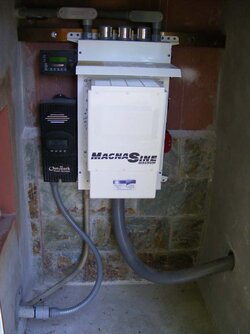Moderator note: This thread has been split from another thread to keep it on topic.
Only protection in every facility that cannot have damage is earthing a 'whole house' protector. Either a surge is inside hunting for earth destructively via appliances. Or one 'whole house' protector earths that energy harmlessly outside. Nothing new. This is how protection was always done; even more than 100 years ago.
Any protection adjacent to an appliance is already better inside the appliance. Your concern is a surge that can overwhelm that existing and superior protection. That was always a 'whole house' protector connected low impedance (ie 'less than 10 feet') to single point earth ground. Not safety ground (as in receptacles). Earth ground.
These superior protectors are provided by more responsible companies including ABB, Siemens, Leviton, General Electric, Intermatic, Square D, Polyphaser, or Ditek ... to name but a few. All names that any guy would know for better integrity. A Cutler-Hammer solution sold in Lowes and Home Depot for less than $50. This less expensive solution is also the superior solution. But again, first learn what all professionals require so that even direct lightning strikes cause no damage.
Protection is always about where hundreds of thousands of joules dissipate. Harmlessly outside. Any protector is only a connecting device to what does protection - single point earth ground.
BTW, read spec numbers for that UPS. Near zero. Just enough above zero to claim 100% protection ... subjectively. Better answers always include spec numbers.
If your computer needs protection, then so does the furnace, dishwasher, clock radios, dimmer switches, the GFCIs so important for protecting human life, every TV, telephone, etc. What must be protected during a surge? Smoke detectors.I guess I'll just get a normal surge protector.
Only protection in every facility that cannot have damage is earthing a 'whole house' protector. Either a surge is inside hunting for earth destructively via appliances. Or one 'whole house' protector earths that energy harmlessly outside. Nothing new. This is how protection was always done; even more than 100 years ago.
Any protection adjacent to an appliance is already better inside the appliance. Your concern is a surge that can overwhelm that existing and superior protection. That was always a 'whole house' protector connected low impedance (ie 'less than 10 feet') to single point earth ground. Not safety ground (as in receptacles). Earth ground.
These superior protectors are provided by more responsible companies including ABB, Siemens, Leviton, General Electric, Intermatic, Square D, Polyphaser, or Ditek ... to name but a few. All names that any guy would know for better integrity. A Cutler-Hammer solution sold in Lowes and Home Depot for less than $50. This less expensive solution is also the superior solution. But again, first learn what all professionals require so that even direct lightning strikes cause no damage.
Protection is always about where hundreds of thousands of joules dissipate. Harmlessly outside. Any protector is only a connecting device to what does protection - single point earth ground.
BTW, read spec numbers for that UPS. Near zero. Just enough above zero to claim 100% protection ... subjectively. Better answers always include spec numbers.
Last edited by a moderator:
